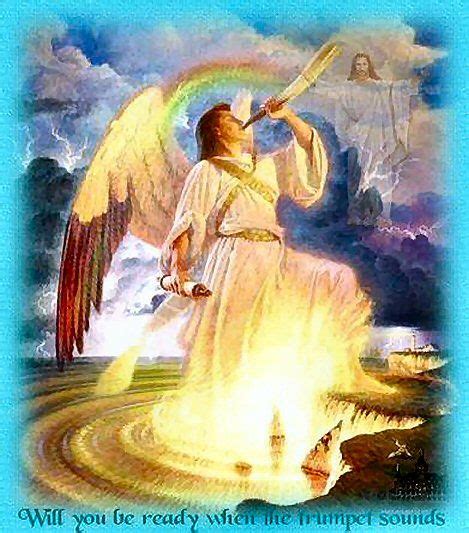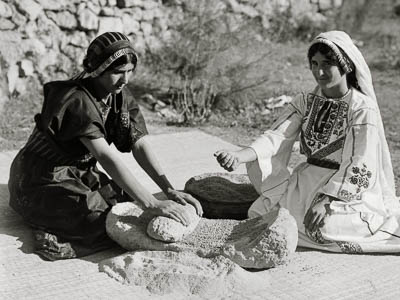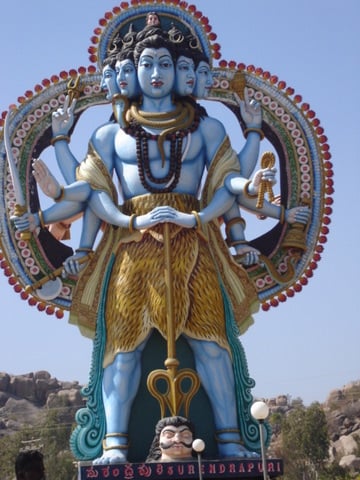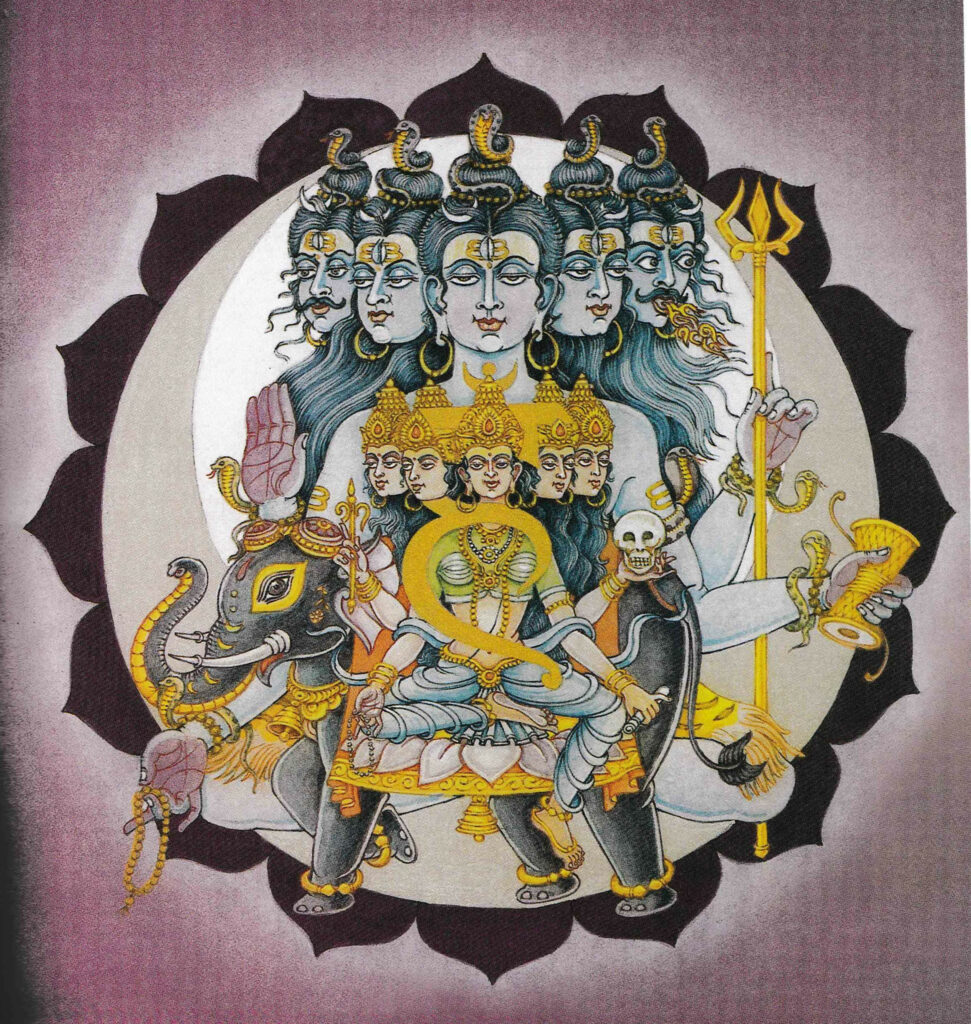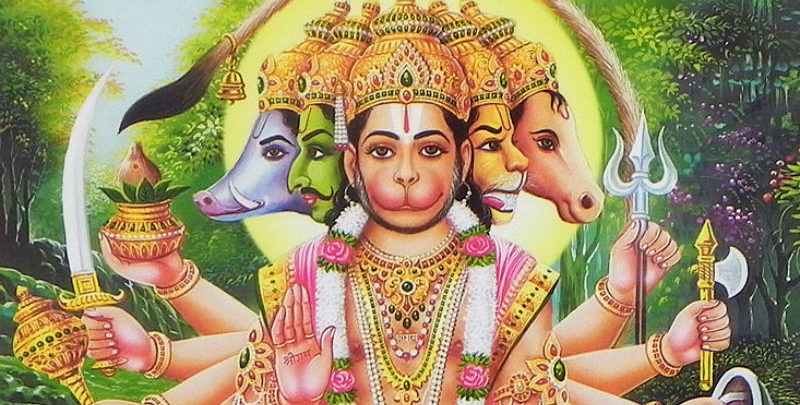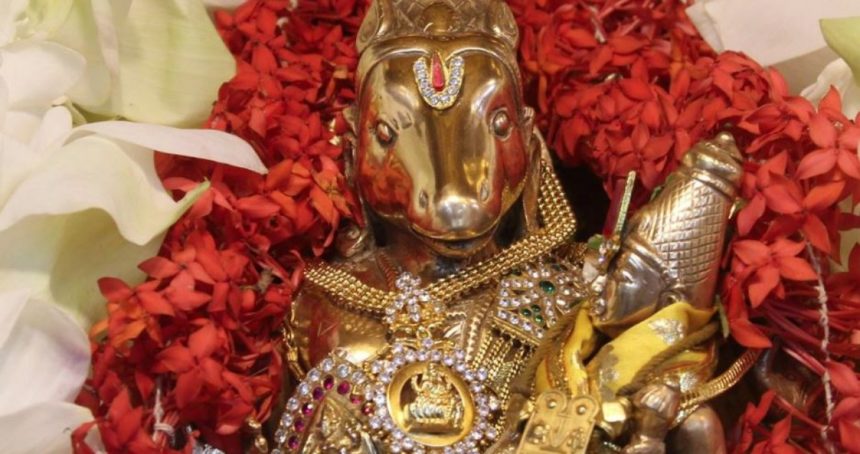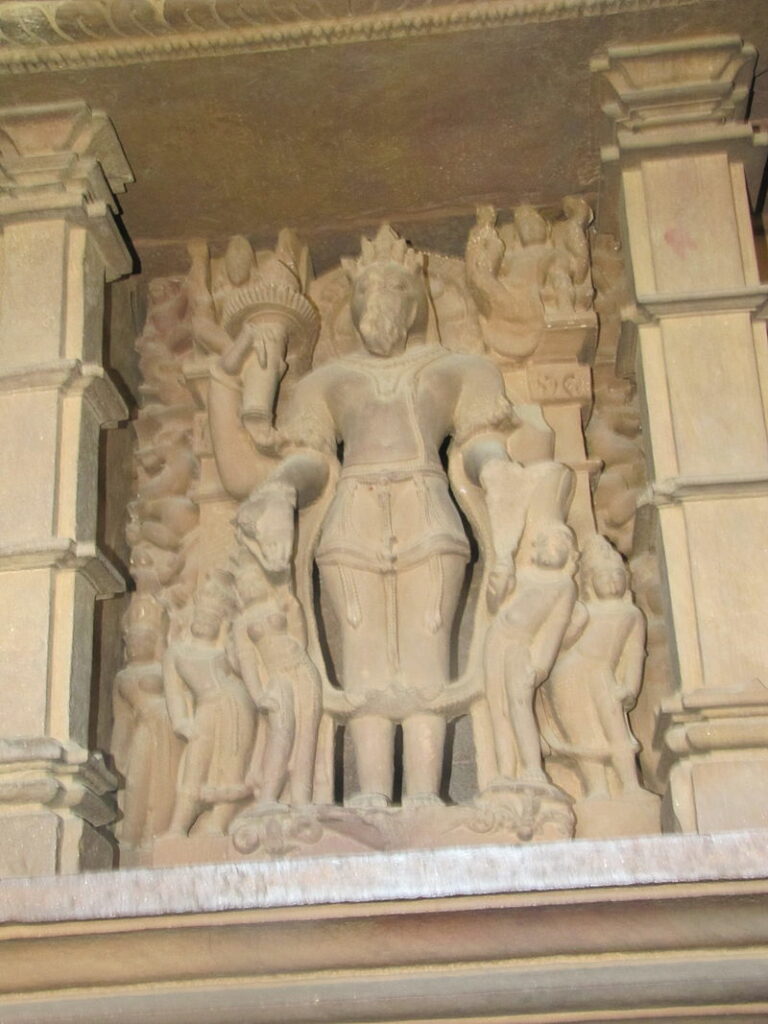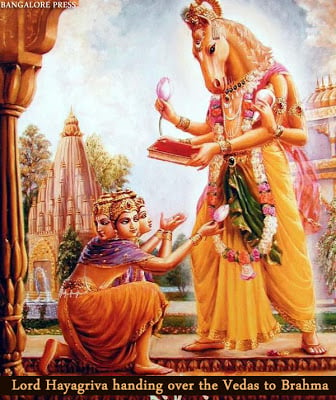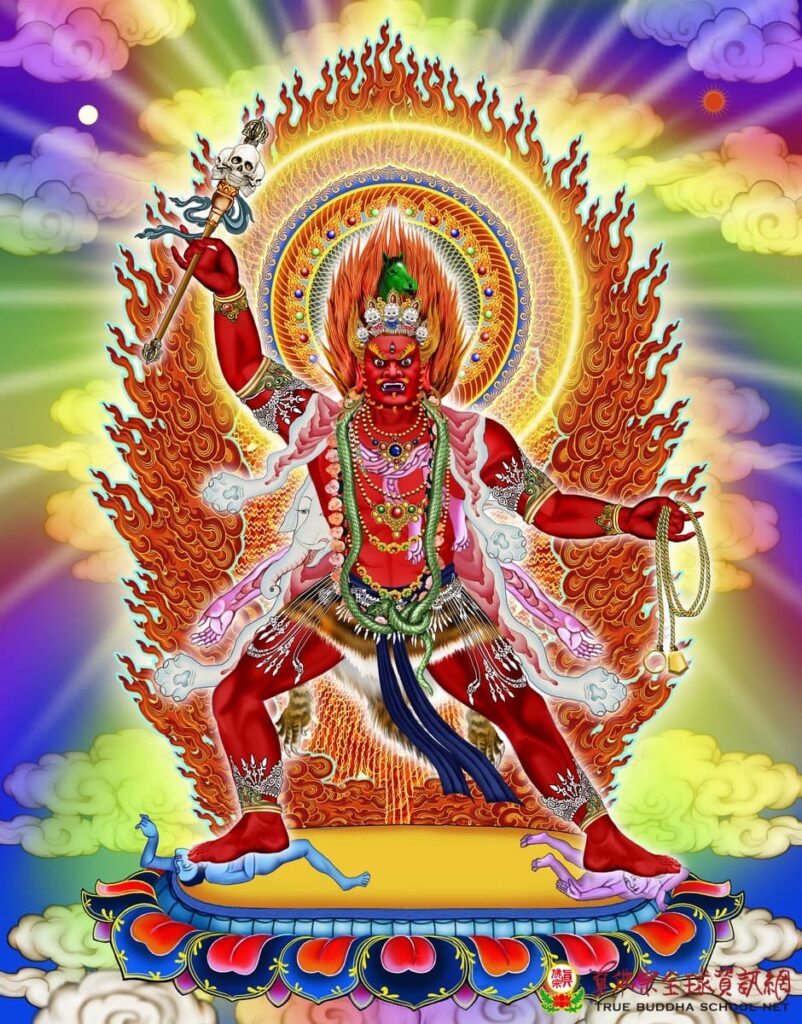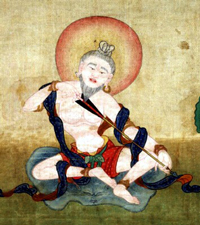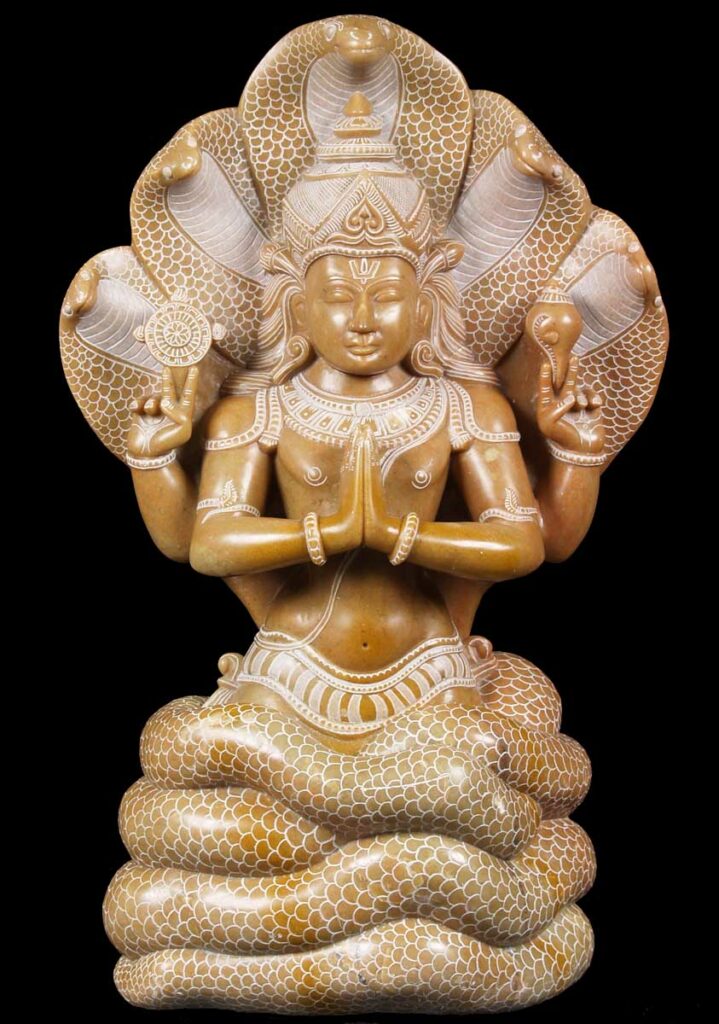CHAPTER I – SAMADHI PADA
CONCENTRATION: ITS SPIRITUAL USES
1 atha yoga anushaasanam
2 yogash chitta vritti nirodhah
3 tadaa drashtuh svaroope avasthaanam
4 vritti saa roopyam itaratra
5 vrittayah pangchatayyah klishta aklishtaah
6 pramaanna viparyaya vikalpa nidraa smritayah
7 pratyaksha anumaana agamah pramaanaani
8 viparyayo mithya jnanam atad roopa pratishtham
9 shabda jnaana aanupati vastu shoonyo vikalpah
10 abhaava pratyaya aalambana vrittir nidraa
11 anubhoota vishaya sanpramoshah smritih
12 abhyaasa vairaagyabhyaam tan nirodhah
13 tatra sthitau yatno abhyasah
14 sa tu dirgha kaala nairantarya sat kaara asevito dridha bhoomih
15 drishta anushravika vishaya vitrishnnasya vashikara samjnaa vairaagyam
16 tat paran purusha khyaatergunna vaitrishnyam
17 vitarka vichaara aananda smitaa roopa aanugamaat sanprajnaatah
18 viraama pratyaya aabhyaasa poorvah samskaara shesho ‘(a)nyah
19 bhava pratyayo videha prakriti layaanaam
20 shraddhaaveerya smriti samaadhi prajnaa poorvaka itareshaam
21 teevra sanvegaanaam aasannah
22 mridu madhya aadhimaatratvaat tato’pi visheshah
23 eeshvarapranidhaanaad vaa
24 kleshakarmavipaakaashayairaparaamrishtah purushavishesh eeshvarah
25 tatra niratishayan sarvajntvabijam
26 sa poorvesham api guruh kalenanavachchhedat
27 tasya vaachakah prannavah
28 tajjapastadarthabhaavanam
29 tatah pratyakchetaanadhigamo’pyantaraayabhaavashch
30 vyadhistyanasamshayapramaadaalasyaviratibhraantidar shanalabdhabhoomikatvanavasthitatvaani chittavikshepaaste’ntaraayaah
31 duhkhadaurmanasyaanggamejayatvashvasaprashvaasaa vikshepasahabhuvah
32 tatpratishedhartham ekatattvabhyaasah
33 maitreekarunamuditopekshaanaam sukhaduhkhapunyapunyavishayaanaam bhaavanaatashchittaprasaadanam
34 prachchhardanavidhaaranaabhyaam vaa praannasya
35 vishayavatee vaa pravrittirutpannaa manasah sthitinibandhinee
36 vishoka vaa jyotishmatee
37 vitaraagavishayan vaa chittam
38 svapnanidraajnaanaalambanam vaa
39 yathaabhimatadhyaanaad vaa
40 paramanu paramamahattvanto’sya vasheekaarah
41 ksheennavritterabhijaatasyev manergraheetrigrahannagraahyeshu tatsthatadangjanataasamaapattih
42 tatra shabdarthajnaanavikalpaih sankeernaa savitarkaa samaapattih
43 smritiparishuddhau svaroopashoonyevarthamaatranirbhaasaa nirvitarkaa
44 etayaiva savichara nirvichaaraa cha sookshmavishayaa vyaakhyaataa
45 sookshmavishayatvan chalinggaparyavasaanam
46 taa eva sabeejah samaadhih
47 nirvichaaravaishaaradye adhyaatmaprasaadah
48 rtambharaa tatra prajnaa
49 shrutanumaanaprajnaabhyaam anyavishayaa visheshaarthatvaat
50 tajjah samskaaro ‘nyasamskaarapratibandhee
51 tasyapi nirodhe sarvanirodhaannirbeejah samaadhih
1 Now concentration is explained.
AUM. The following instruction concerneth the Science of Union.
2 Yoga is restraining the mind-stuff (Chitta) from taking various forms (Vrttis)
This Union (or Yoga) is achieved through the subjugation of the psychic nature, and the restraint of the chitta (or mind).
3 At that time (the time of concentration) the seer (the Purusha) rests in his own (unmodified) state.
When this has been accomplished, the Yogi knows himself as he is in reality.
4 At other times (other than that of concentration) the seer is identified with the modifications.
Up till now the inner man has identified himself with his forms and with their active modifications.
5 There are five classes of modification, painful and not painful.
The mind states are five, and are subject to pleasure or pain; they are painful or not painful.
6 (These are) right knowledge, indiscrimination, verbal delusion, sleep, and memory.
These modifications (activities) are correct knowledge, incorrect knowledge, fancy, passivity (sleep) and memory.
7 Direct perception, inference, and competent evidence, are proofs.
The basis of correct knowledge is correct perception, correct deduction, and correct witness (or accurate evidence).
8 Indiscrimination is false knowledge not established in real nature.
Incorrect knowledge is based upon perception of the form and not upon the state of being.
9 Verbal delusion follows from words having no (corresponding) reality.
Fancy rests upon images which have no real existence.
10 Sleep is a Vrtti which embraces the feeling of voidness.
Passivity (sleep) is based upon the quiescent state of the vrittis (or upon the non-perception of the senses.)
11 Memory is when the (Vrttis of) perceived subjects do not slip away (and through impressions come back to consciousness).
Memory is the holding on to that which has been known.
12 Their control is by practice and non-attachment.
The control of these modifications of the internal organ, the mind, is to be brought about through tireless endeavour and through non-attachment.
13 Continuous struggle to keep them (the Vrttis) perfectly restrained is practice.
Tireless endeavour is the constant effort to restrain the modifications of the mind.
14 Its ground becomes firm by long, constant efforts with great love (for the end to be attained).
When the object to be gained is sufficiently valued, and the efforts towards its attainment are persistently followed without intermission, then the steadiness of the mind (restraint of the vrittis) is secured.
15 That effort, which comes to those who have given up their thirst after objects either seen or heard, and which wills to control the objects, is non-attachment.
Non-attachment is freedom from longing for all objects of desire, either earthly or traditional, either here or hereafter.
16 That extreme non-attachment, giving up even the qualities, shows (the real nature of) the Purusa.
The consummation of this non-attachment results in an exact knowledge of the spiritual man when liberated from the qualities or gunas.
17 The concentration called right knowledge is that which is followed by reasoning, discrimination, bliss, unqualified ego.
The consciousness of an object is attained by concentration upon its fourfold nature: the form, through examination; the quality (or guna), through discriminative participation; the purpose, through inspiration (or bliss); and the soul, through identification.
18 There is another Samadhi which is attained by the constant practice of cessation of all mental activity, in which the Chitta retains only the unmanifested impressions.
A further stage of samadhi is achieved when, through one pointed thought, the outer activity is quieted. In this stage, the chitta is responsive only to subjective impressions.
19 (This Samadhi, when not followed by extreme non-attachment) becomes the cause of the re-manifestation of the gods and of those that become merged in nature.
The samadhi just described passes not beyond the bound of the phenomenal world; it passes not beyond the Gods, and those concerned with the concrete world.
20 To others (this Samadhi) comes through faith, energy, memory, concentration, and discrimination of the real.
Other yogins achieve samadhi and arrive at a discrimination of pure Spirit through belief, followed by energy, memory, meditation and right perception.
21 Success is speeded for the extremely energetic.
The attainment of this state (spiritual consciousness) is rapid for those whose will is intensely alive.
22 They again differ according as the means are mild, medium or supreme.
Those who employ the will likewise differ, for its use may be intense, moderate, or gentle. In respect to the attainment of true spiritual consciousness there is yet another way.
23 Or by devotion to Ishvara.
By intense devotion to Ishvara, knowledge of Ishvara is gained.
24 Ishvara (the Supreme Ruler) is a special Purusha, untouched by misery, the results of actions, or desires.
This Ishvara is the soul, untouched by limitation, free from karma, and desire.
25 In Him becomes infinite that all-knowing-ness which in others is (only) a germ.
In Ishvara, the Gurudeva, the germ of all knowledge expands into infinity.
26 He is the Teacher of even the ancient teachers, being not limited by time.
Ishvara, the Gurudeva, being unlimited by time conditions, is the teacher of the primeval Lords.
27 His manifesting word is Om.
The Word of Ishvara is AUM (or OM). This is the Pranava.
28 The repetition of this (Om) and meditating on its meaning (is the way).
Through the sounding of the Word and through reflection upon its meaning, the Way is found.
29 From that is gain (the knowledge of) introspection, and the destruction of obstacles.
From this comes the realisation of the Self (the soul) and the removal of all obstacles.
30 Disease, mental laziness, doubt, calmness, cessation, false perception, non-attaining concentration, and falling away from the state when obtained, are the obstructing distractions.
The obstacles to soul cognition are bodily disability, mental inertia, wrong questioning, carelessness, laziness, lack of dispassion, erroneous perception, inability to achieve concentration, failure to hold the meditative attitude when achieved.
31 Grief, mental distress, tremor of the body and irregular breathing, accompany non-retention of concentration.
Pain, despair, misplaced bodily activity and wrong direction (or control) of the life currents are the results of the obstacles in the lower psychic nature.
32 To remedy this practice of one subject (should be made).
To overcome the obstacles and their accompaniments, the intense application of the will to some one truth (or principle) is required.
33 Friendship, mercy, gladness, indifference, being thought of in regard to subjects, happy, unhappy, good and evil respectively, pacify the Chitta.
The peace of the chitta (or mind stuff) can be brought about through the practice of sympathy, tenderness, steadiness of purpose, and dispassion in regard to pleasure or pain, or towards all forms of good or evil.
34 By throwing out and restraining the Breath.
The peace of the chitta is also brought about by the regulation of the prana or life breath.
35 Those forms of concentration that bring extraordinary sense perceptions cause perseverance of the mind.
The mind can be trained to steadiness through those forms of concentration which have relation to the sense perceptions.
36 Or (by the meditation on) the Effulgent One which is beyond all sorrow.
By meditation upon Light and upon Radiance, knowledge of the Spirit can be reached and thus peace can be achieved.
37 Or (by meditation on) the heart that has given up all attachment to sense objects.
The chitta is stabilized and rendered free from illusion as the lower nature is purified and no longer indulged.
38 Or by meditating on the knowledge that comes in sleep.
Peace (steadiness of the chitta) can be reached through meditation on the knowledge which dreams give.
39 Or by meditation on anything that appeals to one as good.
Peace can also be reached through concentration upon that which is dearest to the heart.
40 The Yogi’s mind thus meditating, becomes un-obstructed from the atomic to the Infinite.
Thus his realization extends from the infinitely small to the infinitely great, and from annu (the atom or speck) to atma (or spirit) his knowledge is perfected.
41 The Yogi whose Vrttis have thus become powerless (controlled) obtains in the receiver, receiving, and received (the self, the mind and external objects), concentratedness and sameness, like the crystal (before different colored objects.)
To him whose vrittis (modifications of the substance of the mind) are entirely controlled, there eventuates a state of identity with, and similarity to that which is realized. The knower, knowledge and the field of knowledge become one, just as the crystal takes to itself the colours of that which is reflected in it.
42 Sound, meaning, and resulting knowledge, being mixed up, is (called Samadhi) with reasoning.
When the perceiver blends the word, the idea (or meaning) and the object, this is called the mental condition of judicial reasoning.
43 The Samadhi called without reasoning (comes) when the memory is purified, or devoid of qualities, expressing only the meaning (of the meditated object).
Perception without judicial reasoning is arrived at when the memory no longer holds control, the word and the object are transcended and only the idea is present.
44 By this process (the concentrations) with discrim-ination and without discrimination, whose objects are finer, are (also) explained.
The same two processes of concentration, with and without judicial action of the mind, can be applied also to things subtle.
45 The finer objects end with the Pradhana.
The gross leads into the subtle and the subtle leads in progressive stages to that state of pure spiritual being called Pradhana.
46 These concentrations are with seed.
All this constitutes meditation with seed.
47 The concentration “without reasoning” being purified, the Chitta becomes firmly fixed.
When this super-contemplative state is reached, the Yogi acquires pure spiritual realisation through the balanced quiet of the chitta (or mind stuff).
48 The knowledge in that is called “filled with Truth.”
His perception is now unfailingly exact (or his mind reveals only the Truth).
49 The knowledge that is gained from testimony and inference is about common objects. That from the Samadhi just mentioned is of a much higher order, being able to penetrate where inference and testimony cannot go.
This particular perception is unique and reveals that which the rational mind (using testimony, inference and deduction) cannot reveal.
50 The resulting impression from this Samadhi obstructs all other impressions.
It is hostile to, or supersedes all other impressions.
51 By the restraint of even this (impression, which obstructs all other impressions), all being restrained, comes the “seedless” Samadhi.
When this state of perception is itself also restrained (or superseded), then is pure Samadhi achieved.
translations by 1) Swami Vivekananda; and 2) (in italics) The Tibetan (The Light of the Soul by Alice Bailey)
